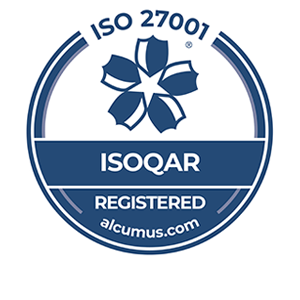Important decisions happen every minute of every day. As normal people, we take the information apparent in that moment to make the best decision possible; as insight professionals we are responsible for producing as much information as possible for stakeholders to make decisions with. Understanding both sides of the coin helps insight teams know exactly what insight is needed at each moment in time.
We in the insights industry are constantly searching for ways to deliver insights at the speed of business, capturing customer reactions as soon as possible, while minimising bias and increasing the impact and reach. Here are a few of the ways that have arisen in the past few years:
1. Perfecting the Research Brief
The first way comes into play right at the start of the research process. If insight professionals ask the right questions of stakeholders then we are able to minimise the impact of any changes or poor quality results: what actions they expect to take throughout the research process and after the research is complete.
| Tweet This | |
| We are constantly searching for ways to deliver insights quickly, while minimising bias and increasing the reach and impact of those insights - here are a few ways that could help. |
These questions aren’t a staple of typical research briefs and thus the impacts of such aren’t immediately apparent. In fact, this isn’t necessarily a question at any point throughout many research processes, as insight teams tend to assume they’ll figure out what to do as soon as they have the insights to inform them - we don’t necessarily think that they’ll know what directions are available to them before the research is requested.
Redesigning the research brief in this way to include questions aids in justifying the research, and helps to form a more accurate, relevant, and stronger research strategy - these questions will help deliver the impactful insights needed in the timeframe outlined in the brief, to help inform those real-time decisions. But as another impact, perfecting the research brief in this way also helps stakeholders to understand the value of insights, and they’ll take the insights generated more seriously.
2. Real-Time Experience Tracking
This Real-Time Experience Tracking research is a practical data collection method, that can be done actively or passively depending on the platforms used. I don’t know about you, but most market researchers cannot trail around after every single customer at all times of the day; luckily, in this day and age, most customers have smartphones that passively collect data on the brands they interacted with, the type of touchpoint they interacted with, the sentiment expressed throughout the experience, and the persuasiveness of the encounter.
MESH Planning have developed the RET method within the insights industry. One way they do this is by sending out SMS-based micro-surveys every time a consumer encounters a brand. But real-time experience tracking doesn’t need to be just from a singular survey method - there are customers who post all about their experiences on a variety of social media platforms unprompted, filled with unbridled emotive reactions on their experiences from start to end, sending their reviews to thousands of other consumers within minutes of an encounter.
There are numerous tools to help you analyse your social media presence and collect data on how your brand is being spoken about - the datasets are all there ready to be harvested for insights. The more each employee knows about how they influence these public reviews and experiences, the more they will be invested in boost their impact, and these insights are the key to helping them develop their role.
3. Build the Right Partnership
For research to have the maximum impact and reach across an organisation, insight teams and stakeholders need to form the right partnership. The foundations of each partnership will differ depending on the experience of both parties; for experienced and established in-house insight teams, they might want to take the lead after gaining an in-depth knowledge of the organisation they work for.
They already have context on what can be done, and thus only need stakeholders to review their plans before implementing them, involving stakeholders only at key times when their engagement will add value to the research process. For experienced stakeholders, they will have a foundation knowledge level of market research and what can be done, they might even know how to set up simple tasks so the insight team can focus on where they can add value most too.
For insight teams and stakeholders relatively new to the dynamic, building up this level of partnership will happen with a bit of trial and error, figuring out where the boundaries are so stakeholders can be engaged without steering the research process in the wrong way, and insight teams to establish expertise and guide stakeholders through the process that they’re so familiar with.
This partnership is essential to enhancing the understanding and action of insights across an organisation, and can result in the creation of a customer-centric, insight-led culture, as well as a channel to communicate insights to support whatever real-time decisions are in process.
4. Video Focus Groups
Vide focus groups are an extraordinary tool that brings brands as close to their customers as possible despite any geographical distance.
There are an increasing number of articles all exploring the different experiences of video focus groups and how they can be a boon to your market research strategy. Through intonation and nuance, all of the contextual information that better informs insights is captured in real-time. Before online video focus groups, traditional focus groups would have been the way to capture this, or extra questions on a survey - however, both of those are severely limited in their accuracy, with severely constrained demographic diversity and no access to behavioural tells respectively.
| Tweet This | |
| Video Focus Groups, forming the right partnership, and creating the right channel to communicate insights are all ways in which we can help support real-time stakeholder decision making. |
But the personal experiences of senior insight professionals have attested that video focus groups not only increase a researchers’ ability to collect rich insights at speed, but the more sophisticated tools like our Focus GroupMR also have areas where stakeholders themselves can watch participants have conversations with each other and us in real-time - this aids stakeholders in generating a deeper understanding of the context in which insights were created and shaving time off the insight delivery stage, as stakeholders can then make decisions immediately based off those viewings alone.
5. Communicating Insights
Communicating insights is easier said than done. There are numerous ways to help communicate insights in a way that increases memorability, engagement, and longevity, for example:
- Insight Advocates planted within each department and meeting help broadcast insights to a wider audience; enhancing reach and breaking down organisational silos.
- Creating a central data bank can help decrease the amount of superfluous research conducted, which saves time, increases the value and actionability of the insights within an organisation and aids decision-making with instant access to insights.
- Using storytelling techniques to boost the memorability of insights really helps to create insight longevity within individuals.
The communication technique you choose will depend a lot on the stakeholder you’re communicating with, the partnership insight teams and stakeholders have formed, and how you believe you can best support real-time decisions. But these tactics for closing connections will give real insight into how the stakeholders you’re partnered with like to be communicated with, and which techniques will raise the insight team’s reputation and brand within an organisation so more stakeholders come to inform their decisions with insights in the future.


















